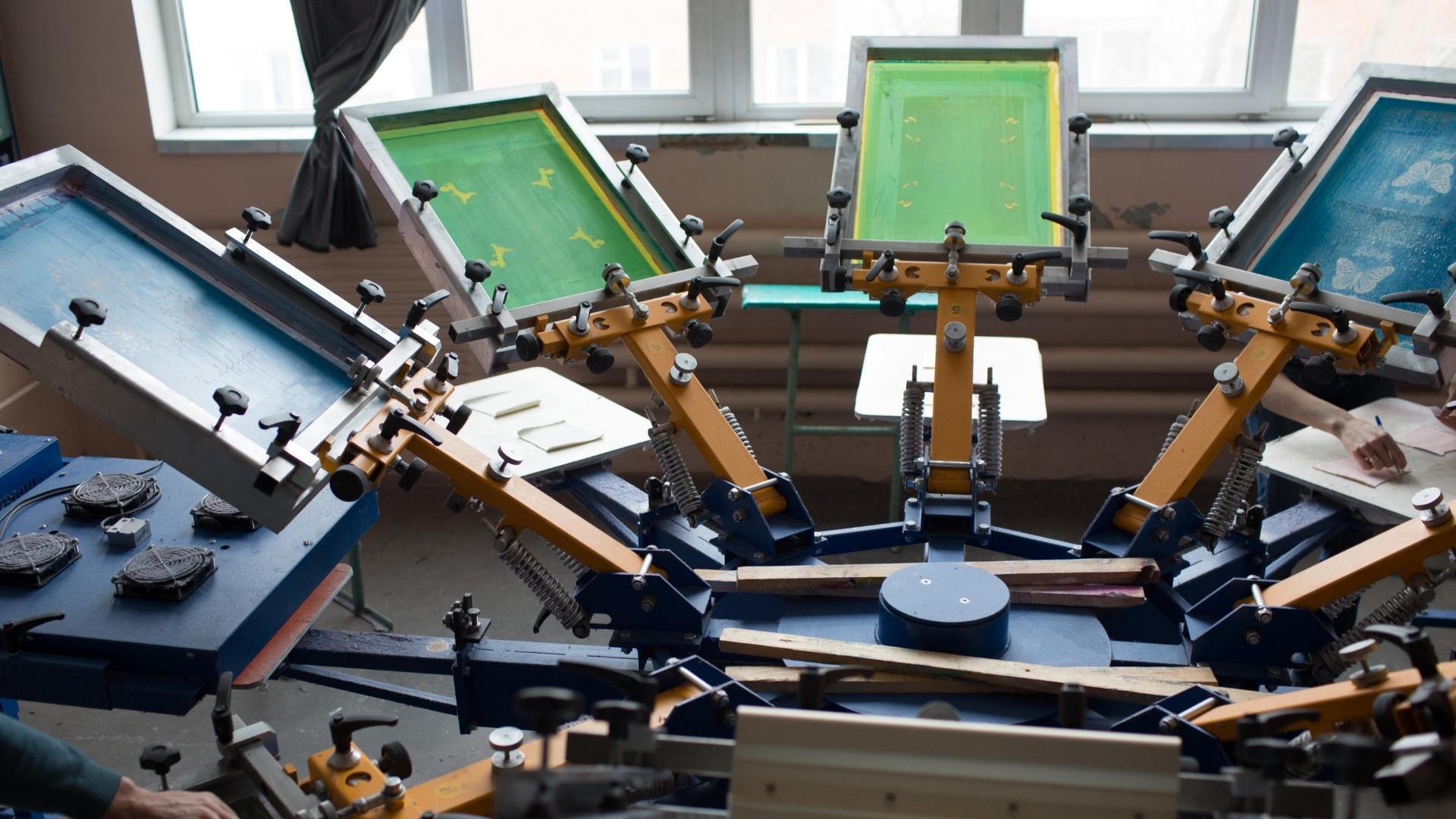ChatGPT said: How to reach 10:9 Design contact for service inquiries
The Important Guide to Understanding Screen Printing and Its Versatile Uses
Screen printing has a rich history that goes back to old times, evolving into an advanced method made use of across various markets today. This overview checks out the details of the screen printing procedure, describing its applications in advertising and marketing, home, and style style - 10:9 Design contact. Recognizing these basics can open creative capacity for both industrial and imaginative jobs. The following sections will expose necessary suggestions and techniques to boost one's screen printing ventures
The History of Screen Printing
Although screen printing has roots that trace back centuries, its advancement shows the imaginative and technical improvements of various societies. Coming from old China, the technique was initially utilized for embellishing fabrics and later spread to Japan, where it became integral to Ukiyo-e woodblock printing. The method changed to Europe in the 18th century, where it got appeal amongst artisans and business printers. The development of photo solution in the 20th century transformed screen printing, enabling even more detailed styles and greater effectiveness. Musicians like Andy Warhol further drove its popularity, using the tool to create famous works that blended commercialism and art. By the late 20th century, screen printing had actually developed itself as a versatile technique, utilized in style, advertising, and fine art. Today, it proceeds to evolve, incorporating electronic innovation and increasing its applications throughout different markets.
The Screen Printing Refine Explained
Screen printing transforms creative visions into concrete designs via a series of precise actions. Initially, a picture is produced and afterwards transferred onto a screen, typically made of great mesh textile extended over a structure. A light-sensitive solution is put on the screen, which is revealed to light, hardening in locations not covered by the photo. After rinsing the unhardened emulsion, a stencil is created.
Next off, the screen is put over the substrate, whether it be fabric, paper, or another product. Ink is after that pressed with the open areas of the stencil using a squeegee, depositing the layout onto the substratum listed below. This procedure can be duplicated for numerous shades, needing separate screens for each tone. Finally, the published thing is healed using heat to assure the ink sticks properly, causing a durable, vibrant design on-line.
Kinds Of Screen Printing Techniques

Furthermore, specialized techniques, such as discharge screen printing, eliminate color directory from the textile to create softer prints, while aluminum foil screen printing applies metallic foil to accomplish a shiny surface (10:9 Design LLC Company). Each technique provides distinct features, accommodating numerous innovative demands and manufacturing scales, ultimately expanding the opportunities within the screen printing domain name
Applications of Screen Printing in Various Industries

In addition, the signs and advertising and marketing industries make use of screen printing for developing captivating displays and banners. This approach enables strong shades and detailed designs that capture focus. In electronics, screen printing is employed for applying conductive inks to circuit card, important for part links. Additionally, the home design sector welcomes screen printing to produce distinct designs on fabrics and wall surface art. On the whole, screen printing functions as a crucial tool throughout varied fields, enhancing products with customized and aesthetically enticing graphics.
Tips for Effective Screen Printing Projects
While carrying out a screen printing task, careful interest to information can significantly enhance the last outcome. Selecting high-grade products is important; this includes the screen, inks, and substratums. Utilizing proper mesh counts can influence ink deposition and detail resolution. Prep work is equally important; extensive cleaning of displays and correct direct exposure times ensure crisp prints.
Next, precise registration is vital for multi-color prints. Using alignment tools can aid attain accurate layering. Additionally, screening prints on scrap materials prior to manufacturing assists determine potential concerns without wasting resources.

Often Asked Questions
What Products Are Finest for Screen Printing on Textile?
Cotton and polyester blends are perfect for screen printing on material because of their resilience and ink absorption. Additionally, specialty textiles like silk or canvas can produce special structures and finishes, boosting the general style top quality.
How Do I Tidy and Maintain Screen Printing Tools?
To cleanse and maintain screen printing devices, one need to on a regular basis clean displays with ideal solvents, inspect mops for wear, lube relocating components, and shop all things in a completely dry, dust-free setting to extend their life expectancy.
What Are the Environmental Impacts of Screen Printing?
Screen printing can have considerable environmental impacts, consisting of chemical waste from solvents and inks, water use throughout cleansing processes, and energy intake. Environmentally friendly materials and lasting techniques are crucial for minimizing these unfavorable results.
Can Screen Printing Be Done in your home Successfully?
Screen printing can be efficiently done at home with the right materials and techniques. Enthusiasts can produce quality prints, though success depends upon their skill degree, tools, and understanding of the procedure included.
What Are the Costs Related To Starting a Display Printing Organization?

Starting a screen printing service entails expenses for tools, products, and office. Initial costs usually range from a couple of hundred to numerous thousand dollars, depending on the scale, high quality of equipment, and preferred production ability.
Screen printing has an abundant history that dates back to ancient times, developing go to this web-site into a sophisticated technique used across different sectors today. Another strategy, rotating screen printing, uses round screens, promoting continual printing on textile rolls, consequently improving efficiency for large manufacturings. Furthermore, specialty techniques, such as discharge screen printing, remove color from the fabric to develop softer prints, while foil screen printing uses metal aluminum foil to achieve a shiny finish. In the fashion market, screen printing is commonly utilized to produce lively styles on garments, making it possible for brand names to showcase their unique styles. Cotton and polyester blends are perfect for screen printing on material due to their sturdiness and ink absorption.